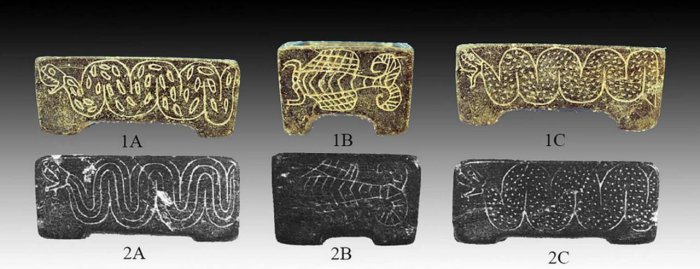Conny Waters – AncientPages.com – Archaeologists have uncovered a wealthy burial site belonging to a young woman who was under 18 at the time of her death. Through detailed analysis of the remains and accompanying artifacts, scientists have determined that this grave is the richest ever found at the site of the Greater Khorasan Civilization (GKC) at Tepe Chalow.

Khorasan and neighboring regions. Credit: Hairy Dude – CC BY-SA 4.0
Greater Khorasan is a historical region that spans parts of eastern Iran, Afghanistan, Turkmenistan, Tajikistan, Uzbekistan, and Kyrgyzstan. Renowned for its rich cultural heritage, it has been home to various civilizations and has played a crucial role in the development of Central Asia.
Ali Vahdati and his colleagues, Raffaele Biscone, Roberto Dan, and Marie-Claude Trémouille, who conducted this study, have identified a significant civilization in Central Asia known as the Greater Khorasan Civilization (GKC).
This civilization is considered a major cultural horizon comparable to those of Mesopotamia and the Indus Valley. Emerging at the end of the third millennium BCE, GKC rapidly expanded across regions including the Murghab River deltas in Turkmenistan, northern Afghanistan and Uzbekistan’s oasis areas, and northeastern Iran’s highland valleys.

A general view of Grave 12 unearthed at Tepe Chalow and the position of burial goods in the grave. Credit: Vahdati et al. 2025
By the early second millennium BCE, the Greater Khorasan Civilization had established extensive connections with other prominent civilizations such as Mohenjo-daro in the Indus Valley and early Mesopotamian dynasties. It also engaged with coastal communities along the Persian Gulf.

Chlorite container with snake and scorpion motifs. Top from Tepe Chalow, bottom from Bactria. Credit: Vahdati et al. 2025
Archaeological evidence reveals its vast trade networks through discoveries in Iraq, Pakistan, Iran, and sites in the Persian Gulf. These findings indicate an active exchange of raw materials and finished goods. Although its ancient name remains uncertain, it may be linked to Marhashi—a region mentioned in Mesopotamian texts known for supplying valuable raw materials, such as chlorite.
Recently uncovered in the “expansion area” of the Greater Khorasan Civilization is Grave 12. Researchers have identified it as a typical pit grave from the Greater Khorasan Civilization/Bactria-Margiana Archaeological Complex (GKC).
The ancient tomb contains the remains of a female adolescent accompanied by 34 luxury items that highlight her high social status in the community.
Among these burial objects are twelve pottery vases characteristic of GKC; seven stone items made from chlorite or white and black stone—including a typical GKC stamp-seal and beads; thirteen metal objects crafted from gold and copper/bronze; along with two ivory pins. The burial aligns northeast-southwest according to Chalow tradition, positioning the body in a crouched posture on its right side with the face turned southeast.

Limestone stamp seal and decorative beads of white marble from Grave 12. Credit: Vahdati et al. 2025
“The burial followed what we have observed to be typical of the Chalow funerary rite: the body was placed in a crouched position on its right side, with the hands near the face, and facing towards the south-east with pottery vessels arranged behind the back of the skeleton, above the head, and below the feet. What made this burial so rich was the discovery of two pins near the shoulders and two bracelets around the arms, numerous chlorite and metal objects grouped near the face, and finally, the large vase near the feet, which contained a significant object (a copper/bronze small jar),” the study informs.
A particularly remarkable discovery at the Chalow site included a bronze mirror and four bronze pins, one of which was adorned with a rosette clasp held by a sculpted hand, alongside two ivory pins. The presence of simple gold earrings, a gold finger ring, and two bronze bracelets worn by the deceased highlighted the affluence of the burial. Near the throat was found a bronze stamp seal engraved with human feet, possibly indicating a religious or protective significance.
Additionally, three cosmetic containers carved from chlorite were unearthed. Among them was a rectangular box with feet, intricately incised with aggressive snakes and stylized scorpions. These animal motifs might have served ritualistic or protective purposes. The craftsmanship and materials of this box suggest connections to distant regions through the use of imported stones, such as serpentine and lapis lazuli.
The burial practices at Chalow reveal social structures where women held significant roles. In the Greater Khorasan necropolis, female graves were often richer in goods compared to male ones and typically contained items such as mirrors, kohl containers, and jewelry. Food offerings—such as sheep bones in cooking vessels—reinforced beliefs in an afterlife.
Over four excavation seasons, 38 graves were uncovered at Chalow; these mainly formed small clusters likely used by extended families. Erosion has exposed many graves near the surface, while earlier layers beneath show evidence of older burials and storage areas, indicating continuous settlement over centuries.
Scholars propose that Khorasan, once considered peripheral, played a pivotal role in shaping the cultural and political networks of Bronze Age Central Asia. Artifacts found within these graves—including incised ceramics, composite beads, and compartmented seals—support the idea that the Khorasan civilization was both an influencer and a recipient of influence within this interconnected world.
See also: More Archaeology News
The grave was found merely 15 centimeters (5.9 inches) below the surface as a result of erosion. Its proximity to an ancient underground water channel, known as a qanat, played a crucial role in protecting it from potential agricultural damage.
The study was published in the Journal of the British Institute of Persian Studies
Written by Conny Waters – AncientPages.com Staff Writer









